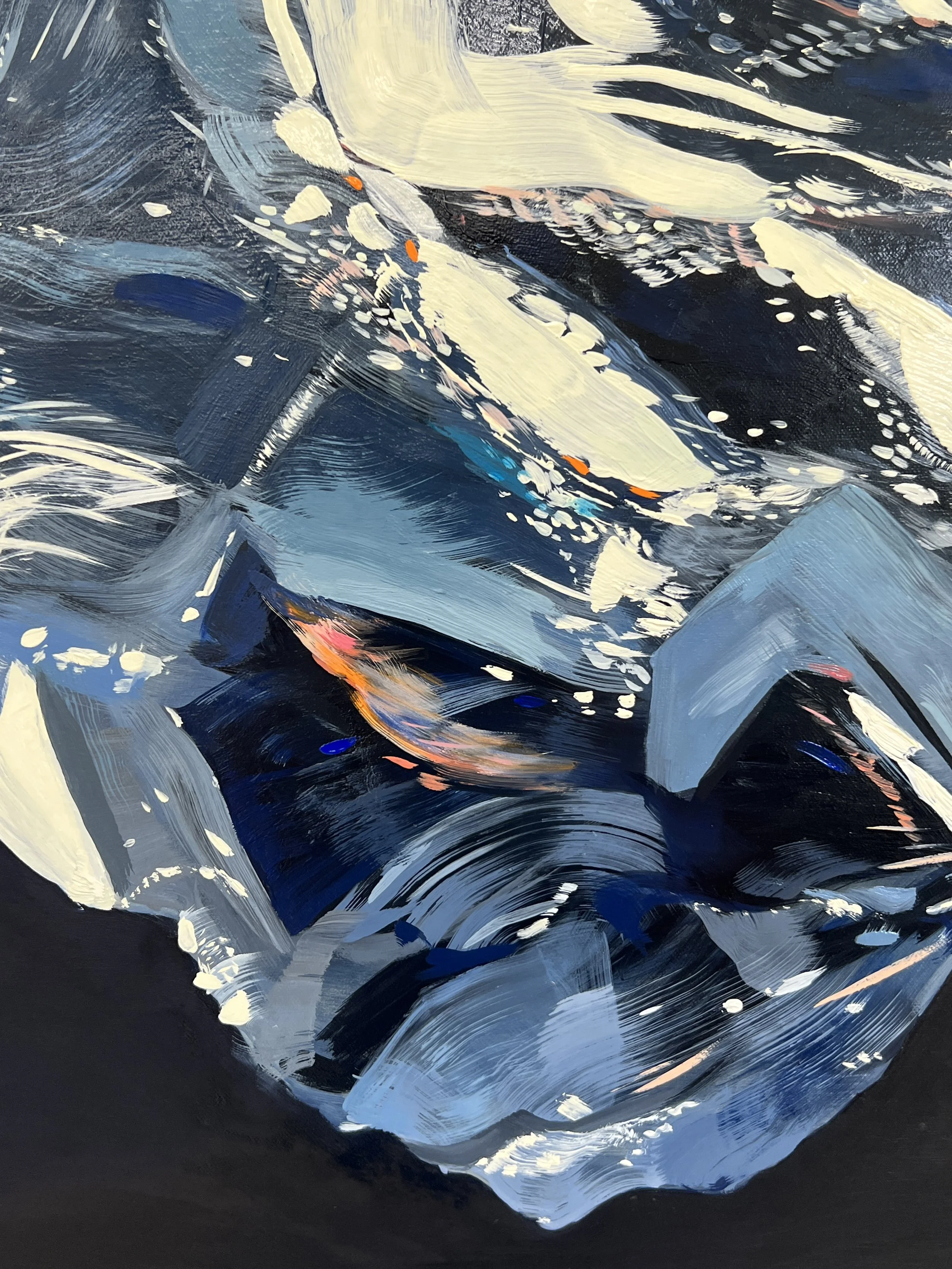Silicon, 2023
Silicon, 2023
Oil on linen
76 x 91 cm (30 x 36 in)
The late 20th and early 21st centuries are often referred to as the Silicon Age, a period defined by the element silicon’s profound influence on global development. As the essential material for semiconductor electronics, highly purified silicon serves as the backbone of transistors and integrated circuit chips, powering everything from smartphones to supercomputers. In the digital era, its presence permeates nearly every aspect of daily life, shaping how we work, communicate, and interact with the world. The ubiquity of silicon underscores its transformative role in an increasingly interconnected and technology-driven society. By depicting purified silicon stone, Tan Mu explores the intricate global supply chains involved in extracting, refining, and distributing this essential resource—the very material at the heart of computing and information technology. Silicon (2023) invites viewers to consider not only silicon’s pivotal role in technological advancement but also the environmental and geopolitical complexities embedded in its production. Through this lens, the work subtly reveals the profound impact of silicon as a fundamental element shaping the contemporary world.
Q: You have described silicon as a fundamental element shaping the contemporary world. In your view, how does silicon influence our era?
Tan Mu: I believe we are living in an era driven by computational power. Breakthroughs in computing have enabled deeper exploration and greater connectivity, and at the core of this technological landscape lies silicon. Silicon is not just an element; it is the foundation of the digital world. It is embedded in computer motherboards, forming countless “on and off” switch chips that regulate the flow of information and shape our perception of reality.
In my works Logic Circuit (2022) and Mapping (2021), I delve into the design and mechanisms of these essential electronic components, examining how they are constructed and hinting at the profound impact of silicon on our contemporary world. My perspective resonates with Michelle Kuo’s discussions in New Order, where she explores the materials that sustain modern society and the role of materiality in the intersection of art and technology. My paintings, in a way, engage with the same inquiry—depicting the material world that underpins our digital existence.
The logic of input and output in these systems mirrors human processes of emotion, language, and cognition. That is why my interest in silicon extends beyond its physical properties. I am fascinated by how it facilitates technological advancement and, in turn, how technology reshapes social structures, transforming fundamental human experiences—relationships, memory, and the formation of communities. Silicon is not just a component of industrial civilization; it permeates our lives, becoming an invisible language through which we perceive and engage with the world.
Q: You mentioned the environmental and geopolitical complexities embedded in silicon production. Does this relate to your broader interest in the relationship between energy, environment, and technology?
Tan Mu: Absolutely. As I’ve said before, we live in an era fundamentally shaped by computational power. In this age of computation, silicon has become the cornerstone of technological progress, yet its production carries significant environmental costs. The refinement of silicon and the fabrication of chips rely on high-temperature smelting and intricate chemical processes that demand vast amounts of energy. Beyond that, data centers and quantum computing facilities have emerged as major energy consumers, further reshaping our relationship with power and resources.
But these transformations do not occur in isolation; they are part of a much broader shift in our environmental and energy systems. They intersect with technology itself: how we extract silicon, how we manufacture the silicon-based infrastructures that drive contemporary computation, and how these processes dictate the physical and political landscapes of our time. In today’s world, those who control technology wield power, often concentrating development and influence in specific regions, which in turn reshapes human relationships, cultural dynamics, geopolitics, and structures of authority.
In my work, I explore these interconnections, tracing the history of energy production from early electrical grids to solar farms and nuclear power. These systems are deeply entangled with the evolution of computation and material science, forming a larger conversation about the ever-shifting landscape of our era. Energy, environment, and technology are not just shaping industries; they are actively reshaping the very fabric of our planet.
Q: What visual language did you use in your work to represent this refined silicon?
Tan Mu: In Silicon, I wanted the painting to be more than just a reproduction of matter. From a distance, the surface of silicon resembles a crystalline structure in a laboratory, refracting sharp edges and a solid, rigid texture under a dramatic, icy light—carrying a surreal, mechanical beauty. But as you move closer, its unique form dissolves into layers of interwoven color, creating a softer rhythm. Subtle flashes of flesh pink seep into the austere tonal base, while jewel-like blues flicker across the surface like fleeting electric sparks. These transitions and intersections of color infuse silicon with an unexpected warmth, allowing it to oscillate between rationality and sensibility. In constructing this piece, I deliberately sought a delicate balance between realist composition and abstract textural ridges. This instability, or perhaps more accurately, this sense of fragility, is precisely what interests me. It transforms refined silicon from a mere industrial material into something organic, something alive.




